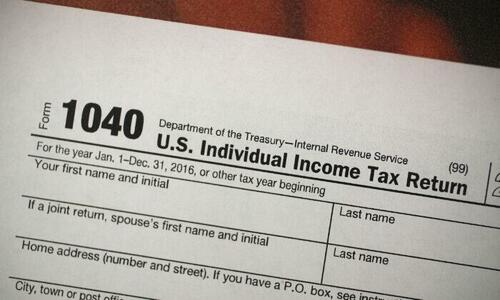IRS Releases Inflation Adjustments for 2023 Taxes: Here’s What It Means For You
Authored by Katabella Roberts via The Epoch Times (emphasis ours),
As the cost of living has soared for Americans battling against chronic inflation, the Internal Revenue Service (IRS) may be bringing some welcome relief.
The federal agency announced on Oct. 18 a string of new annual inflation adjustments that will impact the 2023 tax year, potentially bringing a boost to your paycheck, particularly if your salary hasn’t kept up with the increasing cost of living.
Tax rates are typically adjusted for inflation annually by the IRS, so this is nothing new; but with red-hot inflation currently at a 40-year high in the United States, this year’s changes are likely to feel more significant for millions of Americans.
The adjustments will impact individual income tax brackets, deductions, and credits for next year, potentially bringing relief to taxpayers who may now fall into lower tax brackets.
Here are the changes announced by the IRS, effective for the 2023 tax year:
Standard Deduction
The standard deduction is typically used by most people who don’t itemize their taxes and reduces the amount of income you must pay taxes on.
Under the new annual inflation adjustments announced by the IRS, the standard deduction for married couples filing jointly in 2023 is $27,700, up $1,800, or 7 percent from the prior year.
For single taxpayers and married individuals filing separately, the standard deduction rises to $13,850 for 2023, up $900, and for heads of households, the standard deduction will be $20,800 for the tax year 2023, up $1,400 from 2022, marking a 7.2 percent increase.
Tax Brackets
For the tax year 2023, the top marginal rate, or the highest tax rate based on income, remains 37 percent for individual single taxpayers with incomes greater than $578,125, or $693,750 for married couples filing jointly.
The lowest rate is 10 percent, and applies to single individuals with incomes of $11,000 or less and married couples earning $22,000 or less.
The other rates are: 35 percent for incomes over $231,250 (or $462,500 for married couples filing jointly), 32 percent for incomes over $182,100 (or $364,200 for married couples filing jointly), 24 percent for incomes over $95,375 (or $190,750 for married couples filing jointly), 22 percent for incomes over $44,725 (or $89,450 for married couples filing jointly), and 12 percent for incomes over $11,000 ($22,000 for married couples filing jointly).
Earned Income Tax Credit
The maximum amount for households who claim the earned income tax credit will be $7,430 for the tax year 2023 for individuals who have at least three children. In the tax year 2022, or the current tax year, this was $6,935, according to the IRS.
Flexible Spending Arrangements
A flexible spending account, also known as a flexible spending arrangement, allows workers to contribute a portion of their regular earnings, up to a limit set by the IRS, into an account that can be used to pay for certain health care costs. Given that the funds taken from the account are not subject to income and payroll taxes, they offer specific tax advantages
For the taxable years beginning in 2023, the dollar limitation for employee salary reductions for flexible spending arrangement contributions increases to $3,050, up from the current tax year’s threshold of $2,850.
Other Notable Adjustments
These include the annual exclusion for gifts, which increased to $17,000 for the calendar year 2023, up from $16,000 for the calendar year 2021.
For the tax year 2023, the monthly limitation for the qualified tax-free public transit and parking costs will also increase, to $300, up $20 from this year.
Tyler Durden
Wed, 10/19/2022 – 21:45

